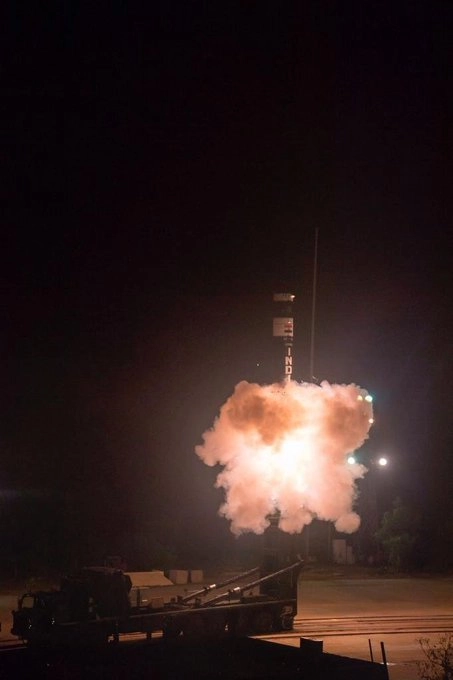India on Wednesday successfully flight-tested its New Generation Ballistic Missile ‘Agni Prime’ from Dr APJ Abdul Kalam Island off the coast of Odisha.
This was the first pre-induction night launch conducted by the users after three successful developmental trials of the missile, validating the accuracy and reliability of the system.
Senior officials from Defence Research and Development Organisation (DRDO) and Strategic Forces Command witnessed the successful flight test, which paved the way for the induction of the system into the Armed Forces.
“During the flight test, all objectives were successfully demonstrated. Range instrumentation like radar, telemetry and electro-optical tracking systems were deployed at different locations, including two down-range ships, at the terminal point to capture flight data covering the entire trajectory of the vehicle,” stated the Defence Ministry.
Defence Minister Rajnath Singh also congratulated DRDO and the Armed Forces for the success as well as the copy-book performance of the New Generation Ballistic Missile Agni Prime.
New generation ballistic missile ‘Agni P’ successfully test-fired by DRDO from Dr APJ Abdul Kalam Island. #AmritMahotsav #IconicWeek https://t.co/7ex3kBczCL pic.twitter.com/FI8yC4Z1K6
— DRDO (@DRDO_India) December 18, 2021
The Agni-P is a medium-range ballistic missile, and is widely seen as a successor for Agni-I and Agni-II missiles, and will be marshalled by Strategic Forces Command.
Due to the use of advanced materials, the Agni-P is in comparison lighter, making it easier to be mounted on the chassis of a truck. It also deploys a manoeuvrable re-entry vehicle (MaRV) technology that allows the warheads to be delivered in two separate locations.
The Agni series of missiles also contribute to India’s sea-based capacity.
As reported by IndiaNarrative.com, the Agni Prime spearheads India’s major naval revamp to deter China and would serve as an equaliser to China’s DF-21D missiles customised to attack aircraft carriers, up to an 1800 kilometres distance with conventional warheads.
China has developed this weapon to undermine the US Navy’s capacity to dominate the Indo-Pacific on account of its much larger fleet of aircraft carriers—floating airfields which can exercise sea control.
India has been demonstrating its intent to build ‘aircraft carrier killer’ missiles by test-firing the Agni Prime missile. Potentially, the missile would be able to target Chinese aircraft carriers and blunt their cutting edge in the future.
From an Indian perspective, this is all the more necessary as Chinese state-run media in the past has argued that Beijing must have six aircraft carriers by 2035.
Also Read: India’s anti-Ballistic Missile test serves notice to China



















